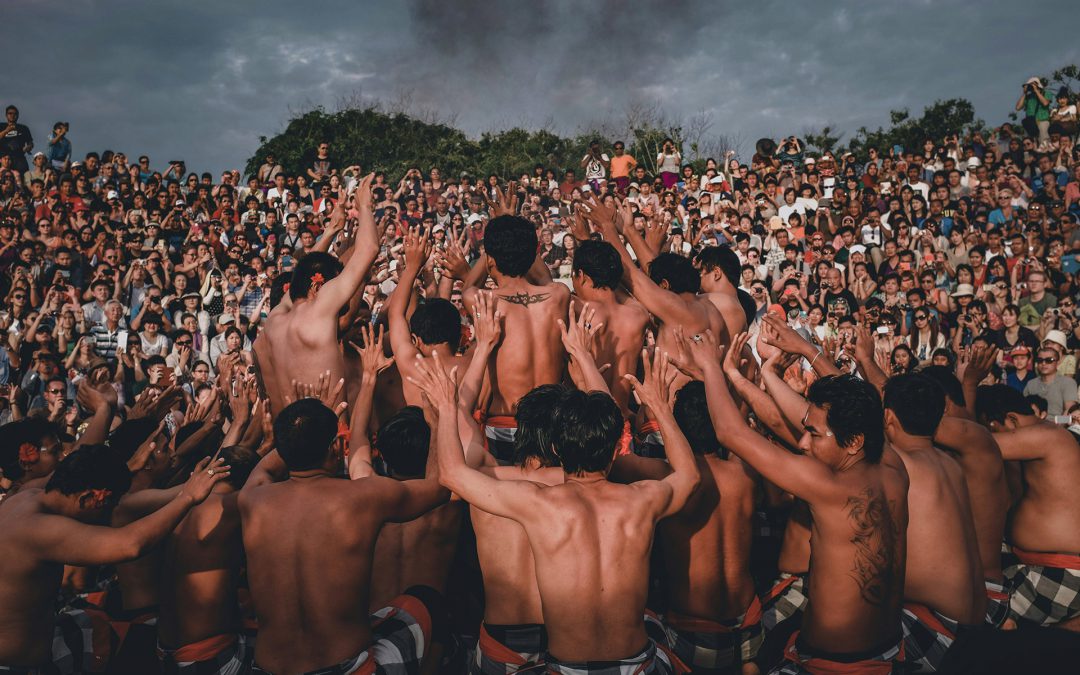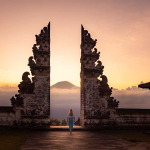Imagine yourself captivated by a mesmerizing dance unlike anything you’ve ever seen. Exotic costumes shimmer under the stage lights, the rhythmic chanting of the gamelan orchestra fills the air, and graceful dancers tell stories that have been passed down for generations. This, my friends, is the magic of a traditional Balinese dance performance – a vibrant spectacle that transports you on a journey through myth, legend, and the very soul of Bali.
A Feast for the Senses: Music, Movement, and Storytelling
Balinese dance is more than just graceful movements. It’s a captivating blend of art forms, where music, costume, and storytelling come together in a mesmerizing display. The rhythmic clanging of the gamelan orchestra, a unique ensemble of metallophones, gongs, and drums, sets the tempo and mood for the performance. Each instrument plays a vital role, weaving a tapestry of sound that complements the dancers’ movements.
The dancers themselves are adorned in elaborate costumes, each piece meticulously crafted and bursting with symbolism. From intricate headpieces to flowing fabrics and shimmering jewelry, the costumes tell their own story, reflecting the characters and the cultural significance of the dance. But the true magic lies in the storytelling. Balinese dance performances often depict scenes from Hindu mythology, epic tales of good versus evil, and stories passed down through generations. The dancers’ expressive movements and intricate hand gestures bring these stories to life, captivating audiences with a silent language that transcends cultural boundaries.
A Glimpse into Different Dance Styles
The world of Balinese dance is a diverse one, with various styles each with its own unique characteristics. Here are a few of the most popular ones you might encounter during your Balinese adventure:
- Legong: This graceful dance is performed by young girls, their intricate hand and eye movements telling stories of love, courtly life, and mythical battles.
- Barong and Kris: This dynamic performance features a battle between Barong, a lion-like creature symbolizing good, and Rangda, a fearsome witch representing evil. Expect high energy, flamboyant costumes, and plenty of audience interaction.
- Kecak: This iconic dance depicts the monkey army’s battle against the demon king Ravana in the Ramayana epic. Hundreds of male dancers chant in unison, creating a powerful and rhythmic soundscape.
- Sanghyang Dedari: This trance dance involves a young girl possessed by a spirit, performing intricate movements while in a deep meditative state. This is a sacred performance, best observed with respect.
Where to Experience the Magic?
Traditional Balinese dance performances are held throughout the island, from village temples to dedicated theaters. Ubud, Bali’s cultural heart, is a great place to start your exploration. The Ubud Palace holds nightly performances, while various temples and restaurants around town also showcase different dance styles.
Beyond the Performance: A Deeper Connection
Witnessing a Balinese dance performance is more than just entertainment; it’s a window into Bali’s rich culture and spiritual beliefs. These dances have been performed for centuries, serving as a way to honor the gods, tell stories, and connect with the community. By experiencing these performances, you gain a deeper appreciation for the vibrant tapestry that is Balinese culture.
Ready to Immerse Yourself in the Magic?
So, are you ready to embark on a journey through myth, legend, and captivating movement? Book your trip to Bali and get ready to be mesmerized by the beauty and power of traditional Balinese dance performances. It’s an experience that will stay with you long after the curtain falls.
Pro Tip: When attending a Balinese dance performance, dress modestly and respect the cultural significance of the event. Avoid using flash photography and refrain from talking loudly during the performance.










